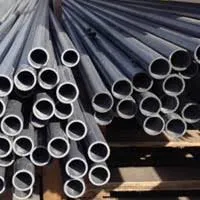
-
 Afrikaans
Afrikaans -
 Albanian
Albanian -
 Amharic
Amharic -
 Arabic
Arabic -
 Armenian
Armenian -
 Azerbaijani
Azerbaijani -
 Basque
Basque -
 Belarusian
Belarusian -
 Bengali
Bengali -
 Bosnian
Bosnian -
 Bulgarian
Bulgarian -
 Catalan
Catalan -
 Cebuano
Cebuano -
 China
China -
 China (Taiwan)
China (Taiwan) -
 Corsican
Corsican -
 Croatian
Croatian -
 Czech
Czech -
 Danish
Danish -
 Dutch
Dutch -
 English
English -
 Esperanto
Esperanto -
 Estonian
Estonian -
 Finnish
Finnish -
 French
French -
 Frisian
Frisian -
 Galician
Galician -
 Georgian
Georgian -
 German
German -
 Greek
Greek -
 Gujarati
Gujarati -
 Haitian Creole
Haitian Creole -
 hausa
hausa -
 hawaiian
hawaiian -
 Hebrew
Hebrew -
 Hindi
Hindi -
 Miao
Miao -
 Hungarian
Hungarian -
 Icelandic
Icelandic -
 igbo
igbo -
 Indonesian
Indonesian -
 irish
irish -
 Italian
Italian -
 Japanese
Japanese -
 Javanese
Javanese -
 Kannada
Kannada -
 kazakh
kazakh -
 Khmer
Khmer -
 Rwandese
Rwandese -
 Korean
Korean -
 Kurdish
Kurdish -
 Kyrgyz
Kyrgyz -
 Lao
Lao -
 Latin
Latin -
 Latvian
Latvian -
 Lithuanian
Lithuanian -
 Luxembourgish
Luxembourgish -
 Macedonian
Macedonian -
 Malgashi
Malgashi -
 Malay
Malay -
 Malayalam
Malayalam -
 Maltese
Maltese -
 Maori
Maori -
 Marathi
Marathi -
 Mongolian
Mongolian -
 Myanmar
Myanmar -
 Nepali
Nepali -
 Norwegian
Norwegian -
 Norwegian
Norwegian -
 Occitan
Occitan -
 Pashto
Pashto -
 Persian
Persian -
 Polish
Polish -
 Portuguese
Portuguese -
 Punjabi
Punjabi -
 Romanian
Romanian -
 Russian
Russian -
 Samoan
Samoan -
 Scottish Gaelic
Scottish Gaelic -
 Serbian
Serbian -
 Sesotho
Sesotho -
 Shona
Shona -
 Sindhi
Sindhi -
 Sinhala
Sinhala -
 Slovak
Slovak -
 Slovenian
Slovenian -
 Somali
Somali -
 Spanish
Spanish -
 Sundanese
Sundanese -
 Swahili
Swahili -
 Swedish
Swedish -
 Tagalog
Tagalog -
 Tajik
Tajik -
 Tamil
Tamil -
 Tatar
Tatar -
 Telugu
Telugu -
 Thai
Thai -
 Turkish
Turkish -
 Turkmen
Turkmen -
 Ukrainian
Ukrainian -
 Urdu
Urdu -
 Uighur
Uighur -
 Uzbek
Uzbek -
 Vietnamese
Vietnamese -
 Welsh
Welsh -
 Bantu
Bantu -
 Yiddish
Yiddish -
 Yoruba
Yoruba -
 Zulu
Zulu
frp valve
Understanding FRP Valves Features and Applications
Fiber Reinforced Plastic (FRP) valves have emerged as a significant innovation in industrial applications, particularly in sectors that require high resistance to corrosive environments and lightweight materials. These valves are constructed using a composite material that incorporates fibers such as glass, carbon, or aramid, which are embedded in a plastic resin. This unique combination not only enhances the mechanical properties but also provides exceptional durability and strength, making FRP valves an ideal choice for various demanding applications.
Understanding FRP Valves Features and Applications
Additionally, FRP valves are significantly lighter compared to traditional metal valves, which translates to easier installation and reduced transportation costs. This lightweight nature also impacts the overall weight of piping systems, leading to lower structural support requirements. In scenarios where weight is a critical factor, such as in offshore platforms or mobile applications, the benefits of FRP valves become even more pronounced.
frp valve

Another important feature of FRP valves is their design flexibility. Manufacturers can tailor the composition of the fiber and resin to meet specific performance criteria, allowing for optimization based on application needs. This adaptability means that FRP valves can be designed for high-pressure applications, high-temperature environments, or even for purposes requiring electrical insulation, thus broadening their usability across different sectors.
In terms of maintenance, FRP valves generally require less upkeep compared to traditional valve materials. Their corrosion-resistant properties reduce the likelihood of leaks and failures, enabling facilities to operate with minimal downtime. When repairs are necessary, the components of FRP valves can often be replaced individually without needing to replace the entire valve, leading to cost savings and reduced waste.
Despite their numerous advantages, FRP valves do have some limitations. They may not be suitable for extremely high-pressure conditions or for applications requiring mechanical strength beyond what is achievable with composite materials. Additionally, some applications may demand a specific fire rating that not all FRP materials can provide. Therefore, it is crucial for engineers and decision-makers to assess the specific requirements of their applications before selecting FRP valves.
In conclusion, FRP valves represent a revolutionary advancement in valve technology, offering numerous benefits such as corrosion resistance, lightweight design, and flexibility in manufacturing. As industries continue to seek more efficient and durable solutions, the adoption of FRP valves is likely to grow. Their ability to perform reliably in challenging environments makes them an invaluable component in modern industrial applications, paving the way for safer and more efficient operations.









